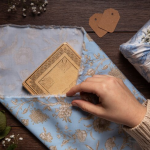Custom woven patches are a versatile and stylish way to express your individuality or brand identity. Whether you’re looking to create unique designs for your clothing, accessories, or promotional items, woven patches offer durability and a refined look that’s hard to beat. In this guide, we’ll explore how to design and create DIY custom woven patches, and provide tips on how to iron on patches for a professional finish.
What Are Custom Woven Patches?
Custom woven patches are fabric patches with intricate designs that are woven directly into the fabric. Unlike embroidered patches, which use thread to create the design, woven patches are created by weaving threads together to form a detailed and colorful pattern. This method allows for fine details and a smooth texture that can’t be achieved with embroidery alone. They’re often used for uniforms, jackets, hats, and various promotional items.
Why Choose Custom Woven Patches?
-
Detail and Precision: The woven process allows for more detailed and intricate designs compared to traditional embroidery. This is ideal for logos or artwork that require fine lines and subtle gradients.
-
Durability: Woven patches are generally more durable than embroidered ones. The weaving process ensures that the design is less likely to fade or fray over time.
-
Flexibility: Woven patches can be made in various shapes and sizes, offering flexibility for different applications. They’re also lightweight, making them suitable for a wide range of fabrics.
Designing Your Custom Woven Patch
-
Concept and Design: Start with a clear idea of what you want your patch to look like. Sketch your design or create a digital mockup using graphic design software. Keep in mind that intricate details and small text might be challenging to reproduce, so simplicity often works best.
-
Choosing Colors: Woven patches use a limited color palette compared to embroidered patches. Select colors that will stand out and complement each other. It’s helpful to use Pantone colors or hex codes to ensure consistency.
-
Size and Shape: Determine the size and shape of your patch. Custom woven patches can be round, square, rectangular, or any custom shape you desire. Make sure your design fits well within the chosen dimensions.
-
Material: Choose a fabric for your patch. Common options include polyester, nylon, and cotton. The material you choose will affect the patch’s look and feel.
-
Backing Options: Consider the type of backing you want for your patch. Options include iron-on, sew-on, or adhesive backing. Each has its benefits and is suitable for different applications.
How to Create Custom Woven Patches
-
Select a Manufacturer: If you’re not producing the patches yourself, choose a reputable manufacturer that specializes in woven patches. Provide them with your design and specifications. Many companies offer online tools to help you visualize your patch before production.
-
Production Process: The manufacturer will create a loom with your design and use it to weave the threads into the fabric. This process typically involves creating a sample or proof before full production begins.
-
Review and Approve: Once the sample is produced, review it for accuracy. Check the design, colors, and overall quality. Make any necessary adjustments before approving the final batch.
Applying Your Custom Woven Patches
To get the best results, it’s essential to know how to iron on patches correctly. Here’s a step-by-step guide:
-
Prepare the Fabric: Ensure the fabric where you’ll be applying the patch is clean and dry. If it’s wrinkled, iron it out beforehand to create a smooth surface.
-
Position the Patch: Place the patch in the desired location on the fabric. Use a fabric marker or chalk to outline the area where the patch will go, if necessary.
-
Ironing the Patch:
- Set the Iron: Heat your iron to a medium setting without steam. Steam can interfere with the adhesive backing, so make sure it’s off.
- Protect the Fabric: Place a thin cloth or parchment paper over the patch. This will protect both the patch and the fabric from direct heat.
- Apply Pressure: Press the iron down firmly on the patch for about 30-60 seconds. Make sure to cover the entire patch with even pressure. Avoid moving the iron back and forth as this can cause the patch to shift.
- Cool Down: Allow the patch to cool completely before handling. This will help the adhesive bond securely to the fabric.
-
Check the Adhesion: After the patch has cooled, check the edges to ensure they are fully adhered. If any part of the patch lifts, reapply heat and pressure as needed.
Tips for Success
- Test on a Scrap Piece: Before applying the patch to your final item, test the process on a scrap piece of fabric to ensure everything works as expected.
- Use the Right Adhesive: If you’re not using an iron-on patch, make sure to use the appropriate adhesive or sewing method for your chosen backing.
- Follow Manufacturer Instructions: Always follow the instructions provided by your patch manufacturer to ensure the best results.
Conclusion
Creating DIY custom woven patches can be a rewarding project, whether you’re adding a personal touch to your wardrobe or creating promotional items for your business. With careful design, the right materials, and proper application techniques, you can achieve professional-looking results right from your home. By understanding how to iron on patches correctly, you ensure that your creations remain securely in place and continue to look great for years to come.
Feel free to experiment with different designs and materials to create patches that truly reflect your style or brand. With a bit of practice and creativity, you’ll master the art of DIY custom woven patches and add a unique touch to any fabric item.















